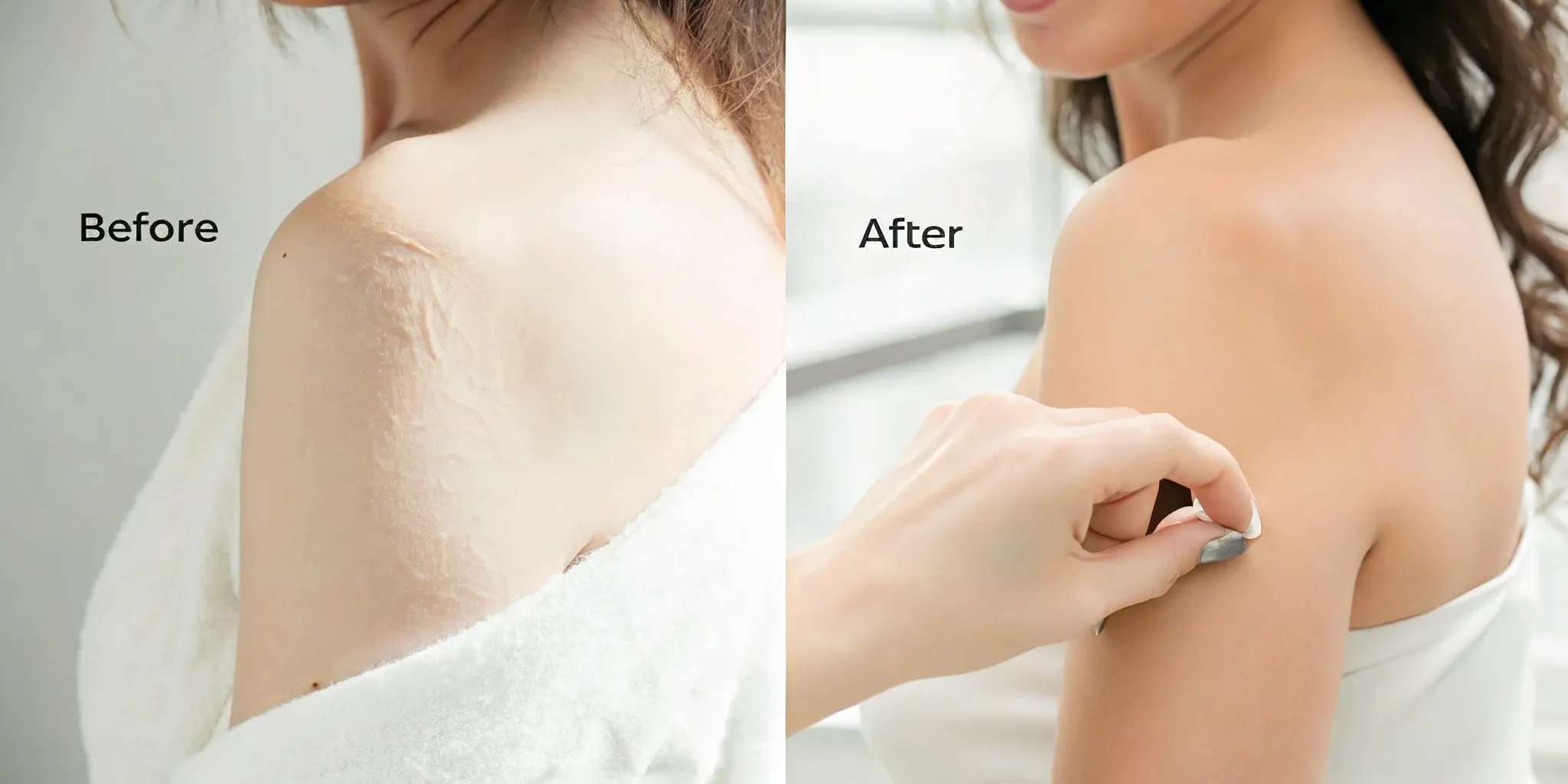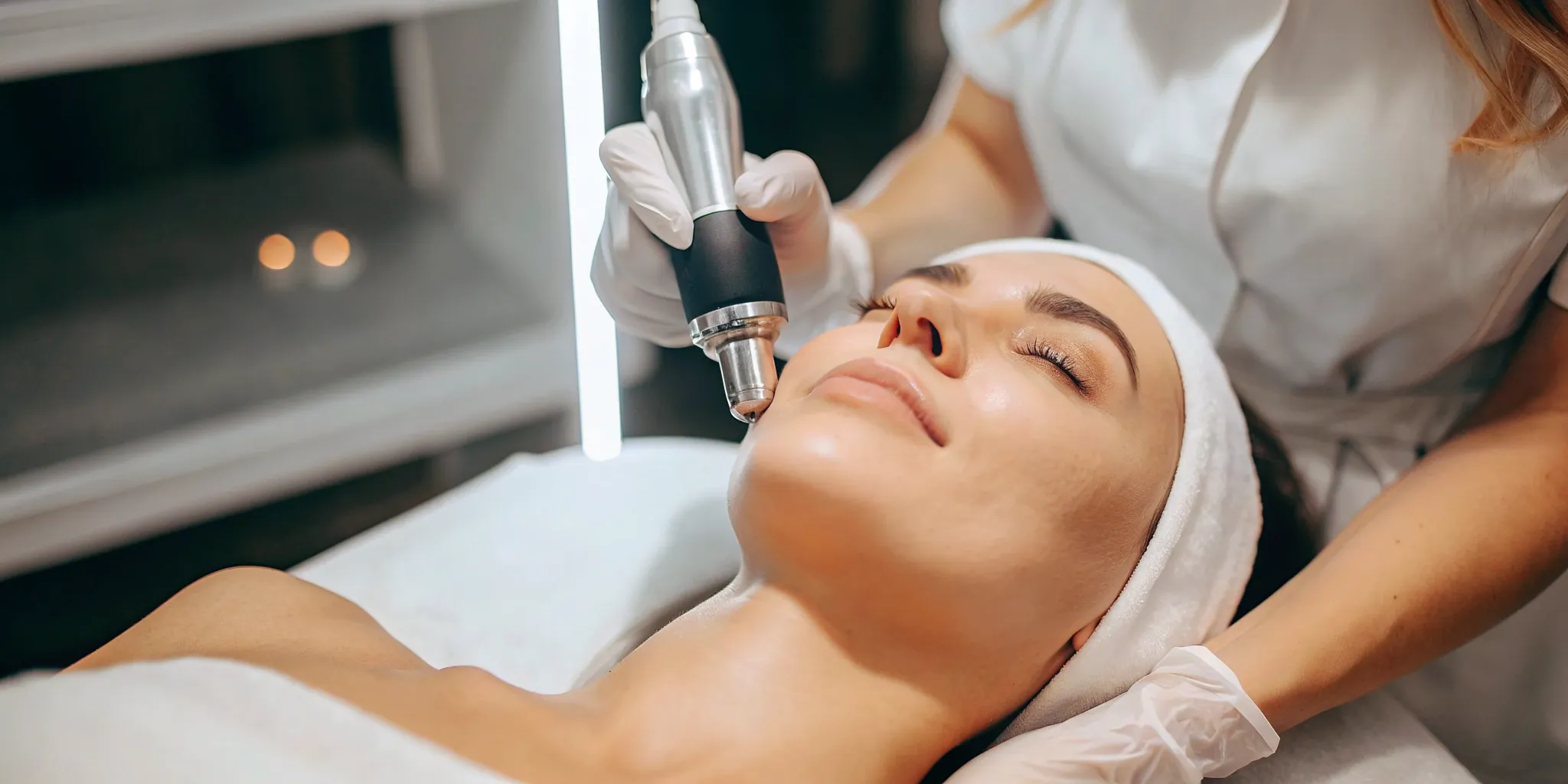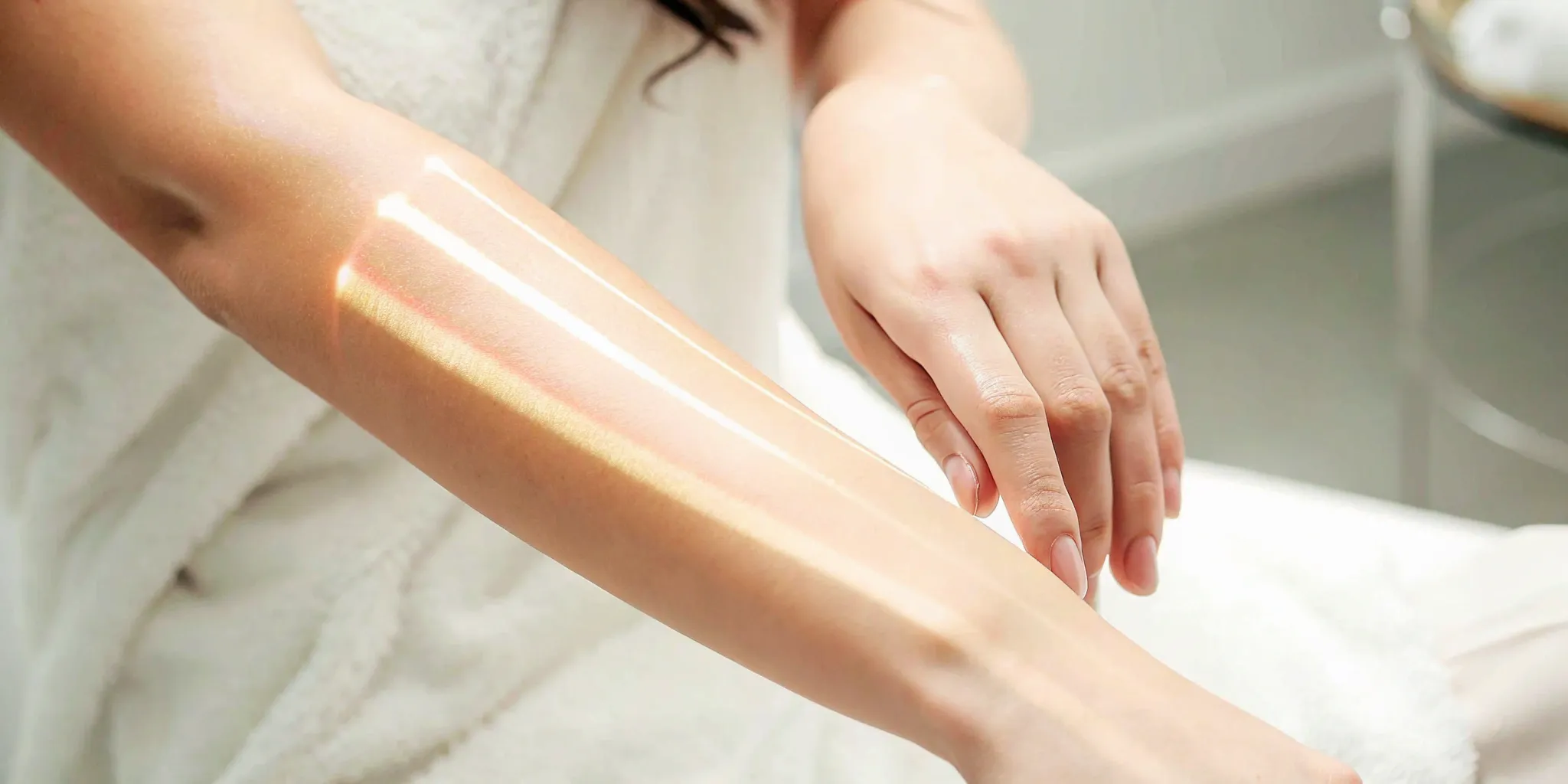The idea of getting rid of fat without surgery sounds almost too good to be true, but it’s not magic—it’s science. Advanced technologies now allow us to target and destroy fat cells beneath the skin using controlled energy like cold, heat, or sound waves. Your body then does the rest, naturally flushing out the treated cells over time for a smoother, more sculpted contour. These innovative fat reduction treatments offer a way to refine your shape with precision and minimal disruption to your life. Here, we’ll break down the different methods available, explain the science behind them, and give you a clear picture of what the process looks like from your first consultation to your final results.
Key Takeaways
- Focus on Contouring, Not the Scale: These treatments are designed to fine-tune your shape by targeting specific, stubborn fat pockets. They are most effective when you’re already near your goal weight and want to sculpt areas that diet and exercise can’t touch.
- Patience Leads to Lasting Results: Your body needs time to naturally flush out the treated fat cells, so final results appear gradually over several months. Because the targeted cells are permanently destroyed, your new contours are designed to last.
- A Healthy Lifestyle Is Your Best Aftercare: To maintain your new shape, it’s important to stick with a stable weight. The treated fat cells are gone for good, but a healthy lifestyle ensures the remaining cells don’t expand, protecting your results.
What Is Non-Surgical Fat Reduction?
Let’s talk about those stubborn pockets of fat that just won’t budge, no matter how consistent you are with diet and exercise. It can be frustrating, but you’re not out of options. Non-surgical fat reduction refers to a category of minimally invasive treatments that target and eliminate fat cells without the need for incisions, anesthesia, or significant downtime. Think of it as a way to contour your body and smooth out specific areas, helping you achieve the shape you’ve been working toward.
Unlike surgical procedures like liposuction, these treatments use advanced technology—like controlled cooling, heat, or sound waves—to damage fat cells beneath the skin. Your body then naturally processes and removes these cells over time. This approach is an excellent choice for people who are close to their ideal weight but want to address specific problem areas like the abdomen, thighs, flanks (love handles), or under the chin. At Ultimate Image MedSpa, we offer a whole suite of non-invasive services designed to help you feel your best, and these body contouring treatments are some of our most popular for delivering targeted results. It’s all about refining your shape on your own terms.
How These Treatments Eliminate Fat Cells
So, how does a treatment get rid of fat without surgery? It’s pretty fascinating. Essentially, these nonsurgical fat reduction treatments work by damaging and destroying fat cells in a targeted area, triggering a process called apoptosis, or controlled cell death. Once the fat cells are compromised, your body’s lymphatic system—its natural cleanup crew—gets to work. Over the following weeks and months, it gradually flushes the dead cells out of your system for good. The best part? The surrounding tissues, like your skin and muscles, are left completely unharmed. This is why there’s little to no recovery time needed. You’re simply letting technology give your body a helping hand to get rid of unwanted fat.
Popular Treatment Options
You have several great, FDA-cleared options when it comes to non-surgical body contouring. Each uses a different method to achieve the same goal of eliminating fat cells. While the technology can vary, here are a few of the most common non-surgical fat reduction methods you’ll find:
- Cryolipolysis (e.g., CoolSculpting): This method uses intense cold to freeze and crystallize fat cells, which causes them to die off before being naturally eliminated by the body.
- Laser Lipolysis (e.g., SculpSure): Instead of freezing fat, this technique uses controlled laser heat to damage the structure of fat cells.
- Ultrasound Fat Reduction: This approach uses highly focused sonic waves to break down fat cell walls in a specific area.
- Injectable Treatments (e.g., Kybella): This is an injectable form of deoxycholic acid, a substance your body naturally produces to absorb fat. It’s primarily used to reduce fat under the chin.
The Science Behind the Treatments
While the methods sound different—freezing, heating, or using sound waves—they all operate on a similar scientific principle. Fat cells are more vulnerable to temperature changes and specific energy wavelengths than other cells in your body. Each technology is calibrated to deliver energy that passes harmlessly through your skin and specifically targets the subcutaneous fat layer beneath. By disrupting the integrity of these fat cells, the treatment signals your body to begin its natural removal process. It’s not an instant fix; your body’s lymphatic system does the rest of the work over time. This gradual elimination is what creates such a smooth, natural-looking result. If you have more questions about the science, we’re always here to chat.
A Guide to Fat Reduction Methods
When diet and exercise aren’t quite enough to address stubborn pockets of fat, non-surgical treatments can help you contour your body and achieve your goals. These methods use advanced technology to target and eliminate fat cells without the need for incisions or lengthy downtime. Each approach works a bit differently, so understanding your options is the first step toward finding the perfect fit for your body and lifestyle. Let’s walk through some of the most popular and effective treatments available.
CoolSculpting (Cryolipolysis)
Think of CoolSculpting as a way to freeze away unwanted fat. This FDA-cleared treatment uses controlled cooling to target and crystallize fat cells beneath the skin, all while leaving the surrounding tissue unharmed. Your body then naturally processes and eliminates these dead cells over time. It’s a popular choice for areas like the abdomen, thighs, upper arms, and under the chin. Most people see a fat reduction of up to 25% in the treated area after just one or two sessions. You might notice some temporary redness or numbness, but results typically start to appear in a month, with the final look settling in after two to three months.
Ultrasound Fat Reduction
This method uses the power of highly focused sound waves to break down fat cells. The ultrasound energy creates vibrations that disrupt the walls of the fat cells, causing them to liquefy. Your body’s natural detoxification system then takes over, filtering out and disposing of the fat. It’s a gradual process, with most people needing one to three treatments spaced a couple of weeks apart to get the best outcome. You’ll start to see changes over several weeks, with final results usually visible within 6 to 12 weeks. Because the fat cells are permanently destroyed, your new contour can last as long as you maintain a stable weight.
Radiofrequency (RF) Treatments
Radiofrequency treatments use targeted energy to heat and destroy fat cells from the inside out. This method is great because it can safely treat larger areas of the body. During the procedure, RF energy gently heats the deeper layers of fat without affecting the surface of your skin. Your body then flushes out the damaged fat cells over the following weeks. A series of four to ten sessions, usually scheduled a week apart, is typically recommended for optimal results. You can expect to see the final outcome about two months after your last treatment, revealing a smoother, more contoured shape. Many of our services use advanced technology to help you look your best.
Injectable Treatments
For smaller, more concentrated areas of fat, like under the chin, injectable treatments can be a fantastic solution. Using a series of injections with a medication like Kybella, this treatment works by dissolving the fat cells it comes into contact with. The medication contains a substance that breaks down dietary fat in your body, and when injected, it destroys the targeted fat cells for good. Most clients need between two and four treatments, spaced about a month apart, to achieve their desired look. While some temporary swelling or bruising is common, the results are long-lasting, provided you don’t have significant weight gain later on. Ready to learn more? Contact us to schedule a consultation.
Laser Fat Reduction
Laser fat reduction is another heat-based method that targets and eliminates stubborn fat. This procedure uses a specific laser wavelength to heat fat cells until they break down, while a built-in cooling system keeps your skin comfortable and protected. Most people describe the sensation as a gentle warmth, and a single treatment for one area usually takes less than 30 minutes. Your body will naturally clear away the treated fat cells over the next few weeks. You’ll likely start seeing results around the six-week mark, with the full effect visible by 12 weeks. As experts in laser technology for treatments like tattoo removal, we know how to deliver safe and effective results.
Are You a Good Candidate?
Non-surgical fat reduction sounds amazing, right? And it is—for the right person. These treatments are designed to fine-tune and sculpt, not as a tool for significant weight loss. So, how do you know if you’re a good fit? It comes down to your personal goals, your health, and having a clear picture of what these treatments can achieve. Think of it as the final step in your wellness journey, targeting those stubborn spots that diet and exercise just can’t seem to touch. Let’s walk through what makes someone an ideal candidate for these innovative procedures.
Body and Fitness Goals
The best candidates for non-surgical fat reduction are typically those who are already close to their ideal body weight. If you have a healthy lifestyle but are frustrated by specific, localized pockets of fat—like love handles, a bit of belly pooch, or stubborn thigh fat—you’re likely a perfect match. These treatments are designed for body contouring, not for shedding pounds. They work wonders on small, pinchable areas that have resisted your hard work at the gym and in the kitchen. It’s all about sculpting the shape you’ve worked for, giving it that final, polished look.
Key Health Factors
Your overall health is the top priority. It’s important to understand that these treatments are not a solution for obesity and won’t significantly change the number on the scale. For safety reasons, anyone who is pregnant or breastfeeding should wait to undergo these procedures. Certain medical conditions may also affect your eligibility, which is why a thorough consultation with a professional is so important. Being open about your medical history ensures you can safely get the results you want. Your provider will review everything to confirm you’re a good candidate before moving forward with any non-surgical fat reduction treatment.
What Are Realistic Expectations?
This is a big one. It’s crucial to have realistic expectations about what non-surgical treatments can do. While they are highly effective at reducing fat in targeted areas, the results are more subtle than what you would get from a surgical procedure like liposuction. You will see a noticeable reduction and a smoother contour, but it won’t be a dramatic, overnight transformation. The best results come from understanding the process and recognizing that these treatments offer gradual, natural-looking improvements. A great provider will walk you through before-and-after photos to give you a clear idea of the potential results.
Which Areas Can Be Treated?
One of the best things about non-surgical fat reduction is its versatility. Different technologies are designed to target specific problem areas all over the body. Common treatment zones include the abdomen, hips (love handles), inner and outer thighs, back (sometimes called “bra rolls”), upper arms, and even the area under the chin. Whether you’re looking to smooth your stomach or define your jawline, there’s likely a treatment that can help. The specific technology used will depend on the area you want to treat and your unique body composition. The best way to find out which of our services is right for you is to schedule a consultation.
What to Expect From Your Treatment
Deciding to pursue a non-surgical fat reduction treatment is a big step, and it’s natural to have questions about what the process looks like from start to finish. Knowing what to expect can help you feel confident and prepared. From your initial chat with a provider to seeing your final results, here’s a breakdown of the journey.
Your Consultation
Your first step is a one-on-one consultation. This meeting is all about you—your goals, your body, and your questions. It’s the best way to determine if non-surgical fat reduction is the right fit for your needs. During this conversation, a trained provider will assess the areas you want to treat and review your health history. We’ll discuss the different treatment options available and help you choose the one that aligns with your desired outcome. Think of it as a collaborative planning session where we map out your path to success. Ready to get started? You can schedule a consultation with our team to get personalized advice.
What Happens During the Procedure?
Once you have a treatment plan, it’s time for your appointment. Non-surgical fat reduction procedures use advanced technology to target and eliminate fat cells without incisions. Depending on the method, this could involve controlled cooling, radiofrequency heat, ultrasound waves, or lasers. These technologies work beneath the skin’s surface to destroy fat cells, which your body then naturally flushes out over the following weeks. The specific sensation varies between treatments, but most clients find the process comfortable and can relax, read, or even catch up on emails during the session. We offer a complete range of treatments to suit different needs and preferences.
Recovery Time and Aftercare
One of the biggest draws of non-surgical fat reduction is the minimal downtime. Most treatments take less than two hours, and since they are non-invasive, you can typically return to your daily activities right away. There are no incisions to care for, so you won’t have to worry about a lengthy or complicated recovery. You might experience some temporary redness, minor swelling, or tenderness in the treated area, but these effects usually fade quickly. Your provider will give you simple aftercare instructions to follow, but for the most part, you can get back to your life without interruption.
When Will You See Results?
Patience is key when it comes to seeing your new shape emerge. While the treatment destroys fat cells immediately, your body needs time to do its part and clear them away. Most people start to notice changes within the first month, with more significant and final results appearing after two to three months. This gradual process ensures your results look natural and smooth. It’s exciting to watch the improvements unfold as your body metabolizes the treated fat cells, revealing a more contoured silhouette over time.
Understanding the Costs
The cost of non-surgical fat reduction varies depending on several factors, including the type of technology used, the size of the treatment area, and the number of sessions required to achieve your goals. Because every person’s body and objectives are unique, there’s no one-size-fits-all price. The best way to get an accurate idea of the investment is during your consultation. We can create a personalized treatment plan tailored to you and provide a clear breakdown of the costs involved. This ensures you have all the information you need to make a confident decision.
Benefits vs. Limitations
Deciding if non-surgical fat reduction is right for you means looking at the full picture. These treatments offer some incredible advantages, especially for targeting specific areas, but they aren’t a one-size-fits-all solution. Understanding both the benefits and the limitations will help you set clear, achievable goals for your body and feel confident in your choice. Let’s walk through what you can realistically expect, who these treatments are best for, and the key safety factors to keep in mind.
The Main Benefits
The biggest advantage of non-surgical fat reduction is that you can target stubborn fat without the downtime of surgery. These treatments are designed to reduce pockets of fat that don’t respond to diet and exercise, helping you refine and shape your body. Because there are no incisions or general anesthesia involved, you can get back to your routine almost immediately. This makes it a great option for people who want noticeable results without the scars, risks, and recovery period associated with surgical procedures. You can achieve a more contoured look in a way that fits your busy lifestyle.
Who Should Avoid These Treatments?
It’s important to know that these treatments are for body contouring, not significant weight loss. They won’t dramatically change the number on the scale. If your goal is to lose a substantial amount of weight, this isn’t the right path for you. Additionally, anyone who is pregnant or breastfeeding should not undergo non-surgical fat reduction procedures. The ideal candidate is someone who is already close to their target weight but needs help with specific, localized areas of fat. A consultation is the best way to determine if our services align with your personal health and beauty goals.
What Are the Potential Side Effects?
After a treatment, it’s common to experience some temporary and mild side effects in the treated area, such as swelling, redness, numbness, or a tingling sensation. These effects typically resolve on their own within a few days to a week. Serious complications are very rare, but it’s good to be aware of them. For example, a rare side effect associated with cryolipolysis called Paradoxical Adipose Hyperplasia (PAH) can cause the treated fat area to become larger and firmer. Being transparent about all potential outcomes is part of our commitment to your care and safety.
Safety First: What to Know
Your safety is the top priority. Choosing a qualified, experienced provider is the most important step you can take to ensure a successful and safe treatment. During your consultation, you should feel comfortable asking questions and confident that you’re receiving expert guidance. This conversation is key to understanding what kind of results you can realistically expect, rather than relying on advertising claims. We encourage you to contact us to schedule a one-on-one consultation where we can discuss your goals and create a treatment plan that is both effective and safe for you.
How Long Do Results Last?
One of the best parts of non-surgical fat reduction is that the results can be permanent. The treatments destroy fat cells in the targeted area, and your body naturally eliminates them over time. Because this process is gradual, the results appear slowly and discreetly. You might start to see changes within a few weeks, with continued improvement over the following months. To maintain your new shape, it’s important to keep a stable weight through a healthy lifestyle. As long as you do, you can enjoy your results for years to come.
How Do Results Compare to Liposuction?
When you’re exploring fat reduction, the conversation often turns to liposuction. It’s a well-known procedure, but how does it really stack up against non-surgical treatments? Think of it as choosing between a sledgehammer and a sculptor’s chisel. Both can shape stone, but they are used for very different tasks and produce different results. Liposuction is a surgical procedure designed for more significant fat removal, while non-surgical options are designed to sculpt and refine specific areas with precision and minimal disruption to your life. Understanding the key differences in effectiveness, recovery, cost, and risks will help you decide which path aligns best with your personal body goals.
Effectiveness: Non-Surgical vs. Liposuction
Let’s be direct: liposuction is a surgical procedure that can remove a larger volume of fat in a single session, making it a more powerful option for substantial changes. However, non-surgical fat reduction is highly effective for its intended purpose—targeting and eliminating stubborn pockets of fat that resist diet and exercise. These treatments are perfect for fine-tuning areas like the abdomen, thighs, or under the chin for people who are already near their ideal weight. While not a replacement for surgical methods, non-surgical treatments offer noticeable, natural-looking results by precisely sculpting your contours. The best approach depends entirely on your starting point and what you hope to achieve with your treatment plan.
Comparing Recovery Times
This is where non-surgical treatments truly shine. Most procedures require little to no downtime, allowing you to return to your daily activities almost immediately. You could realistically schedule a session during your lunch break and head right back to work. You might experience some mild swelling or redness, but it typically resolves quickly. In contrast, liposuction is surgery, and it comes with a significant recovery period. You can expect swelling, bruising, and discomfort that requires several days of rest and weeks of limited activity. For many, the ability to avoid a lengthy recovery is the single biggest advantage of choosing a non-surgical path.
A Look at the Costs
The financial investment for these two approaches is structured very differently. Liposuction involves a single, significant upfront cost that covers the surgeon’s fee, anesthesia, and facility charges. Non-surgical treatments are priced per session. While one session is considerably less expensive than liposuction, most people need a series of treatments to achieve their desired outcome. The total cost will depend on the area being treated and the number of sessions required. The best way to get a clear picture of what your investment will look like is to schedule a consultation. We can create a personalized plan and provide a detailed cost breakdown to help you make an informed decision. You can contact us to get started.
Comparing the Risks
Because they are minimally invasive, non-surgical fat reduction methods generally have a lower risk profile than surgical procedures. The most common side effects are temporary and mild, such as redness, swelling, tingling, or bruising in the treated area. More serious complications are very rare. In contrast, liposuction carries all the standard risks associated with surgery, including adverse reactions to anesthesia, infection, scarring, and blood clots. While both types of procedures are considered safe when performed by a qualified professional, the less invasive nature of non-surgical options provides peace of mind for many clients who want to avoid the potential complications of a surgical operation.
How to Choose the Right Treatment for You
With so many effective non-surgical treatments available, figuring out where to start can feel like a big task. But you don’t have to do it alone. The best approach is a partnership between you and a skilled provider who can help you match your goals with the right technology. Finding the perfect fit involves a few key steps: understanding your options, asking the right questions, creating a personalized plan, and committing to maintaining your results.
Thinking through these steps will help you move forward with confidence. It’s all about making an informed decision that feels right for you and your body. When you’re ready, a professional can guide you through the specifics of each treatment and design a plan tailored to your unique needs. This ensures you’re not just choosing a popular procedure, but the one that will give you the best possible outcome.
Evaluate Your Options
First things first, it’s helpful to understand the landscape of non-surgical fat reduction. These treatments use advanced technology to target and eliminate fat cells without the need for incisions or downtime. Different methods work in different ways—some use controlled cooling to freeze fat cells, while others use heat, ultrasound, or radiofrequency energy. Each of these services is designed to address specific concerns and areas of the body. These procedures are excellent options for people who want to address stubborn fat pockets but aren’t interested in or ready for a surgical procedure like liposuction.
Questions to Ask Your Provider
Your consultation is the most important step in this process. It’s your opportunity to get clear, direct answers from an expert and ensure you feel completely comfortable. Don’t be shy—a great provider will welcome your questions.
Here are a few essential things to ask:
- Am I a good candidate for this treatment?
- What kind of results can I realistically expect?
- How many sessions will I likely need?
- What does the recovery process look like?
- Can you show me before-and-after photos of previous clients?
The goal is to leave your consultation feeling empowered and informed. A trusted professional can help you understand if non-surgical fat reduction is the right path for you, so be sure to contact us to schedule a chat.
Create Your Treatment Plan
Once you’ve chosen a procedure, your provider will work with you to create a personalized treatment plan. This isn’t a one-size-fits-all process; your plan will be based on your specific body, your aesthetic goals, and the area you want to treat. It’s important to have realistic expectations from the start. For many people, achieving the best results requires a series of treatments spaced out over several weeks or months. These procedures are most effective for reducing smaller, localized areas of stubborn fat that haven’t responded to diet and exercise—think love handles, a bit of belly pooch, or fat under the chin.
How to Maintain Your Results
Non-surgical fat reduction permanently destroys the targeted fat cells, which means they are gone for good. However, it’s crucial to understand that this doesn’t make you immune to future weight gain. The remaining fat cells in the treated area and elsewhere in your body can still expand if you consume more calories than you burn. To protect your investment and enjoy your new contours for years to come, maintaining a stable weight is key. Think of these treatments as a powerful complement to a healthy lifestyle, not a substitute for one. Consistent exercise and a balanced diet are the real secrets to long-term success.
The Truth About Fat Reduction
When you’re exploring ways to refine your body shape, it’s easy to get lost in a sea of information. Non-surgical fat reduction is an incredible technology, but it’s also surrounded by a lot of chatter and confusion. Let’s clear the air and get straight to the facts. Understanding what these treatments can—and can’t—do is the first step toward making a choice you’ll feel great about.
Think of this as your straightforward guide to the realities of fat reduction. We’ll break down some of the most common myths, clarify the difference between losing weight and reducing fat, and talk about what it really takes to get and maintain your results. My goal is to give you the clear, honest information you need to decide if this path is the right one for you. With the right expectations, you can confidently work toward your personal beauty goals.
Debunking Common Myths
Let’s tackle some of the biggest myths about non-surgical fat reduction. First, many people think these treatments are only for significant weight loss, but that’s not the case. They are actually designed for individuals who are already close to their ideal weight but struggle with stubborn pockets of fat that won’t budge with diet and exercise. Another common misconception is that the results are temporary. While some methods might offer fleeting changes, many of today’s advanced non-surgical treatments can permanently destroy fat cells. Finally, it’s important to know that one session usually isn’t a magic bullet. Achieving your ideal outcome often requires a series of treatments.
Weight Loss vs. Fat Reduction: What’s the Difference?
It’s crucial to understand that fat reduction is not the same as weight loss. When you lose weight through diet and exercise, your fat cells shrink in size, but the number of fat cells in your body stays the same. This is why you might lose pounds on the scale but still see persistent fat in areas like your abdomen, thighs, or love handles. Non-surgical fat reduction treatments, on the other hand, work differently. They target and eliminate fat cells in a specific area. Once those cells are gone, they’re gone for good. This is why these services are considered body contouring—they change your shape, but they won’t necessarily cause a big drop on the scale.
Why You Might Need Multiple Sessions
Patience is a key part of the non-surgical fat reduction process. While it would be amazing to get your final results after a single appointment, your body needs time to do its work. After a treatment destroys the targeted fat cells, your body’s natural metabolic processes have to clear them away. This doesn’t happen overnight. Most treatments require multiple sessions, typically spaced a few weeks apart, to achieve the best possible outcome. Each session builds on the last, gradually reducing the fat layer until you see the smooth, contoured look you’re hoping for. During your consultation, we can create a personalized treatment plan that outlines exactly what to expect.
Keys to Long-Term Success
Once your treatment series is complete and you’re loving your results, you’ll want to keep them. The fat cells that were eliminated are permanently gone, but the remaining fat cells in the area can still expand if you gain weight. That’s why maintaining a healthy lifestyle is so important. Think of your treatment as a great motivator to stick with healthy habits. A balanced diet and regular exercise are the keys to ensuring your new contours last for years to come. By pairing your treatment with a commitment to your overall wellness, you’re not just investing in a procedure—you’re investing in yourself. You can contact us to learn more about how our treatments fit into a healthy lifestyle.
Related Articles
- Fat Reduction Machines: A Guide to Body Contouring – Ultimate Image MedSpa
- Best Ultrashape Fat Reduction | Fat Loss Redefined
Frequently Asked Questions
Will the fat come back after the treatment? The fat cells that are destroyed during the treatment are permanently eliminated from your body. However, it’s important to remember that the remaining fat cells in the area can still expand if you gain weight. To keep your new, contoured shape for the long haul, the best approach is to maintain a stable weight through a healthy diet and consistent exercise.
Does non-surgical fat reduction hurt? Most people find these treatments to be very tolerable. Depending on the specific technology we use, you might feel sensations of intense cold, deep warmth, or tingling in the treatment area. While it can feel a bit unusual, it’s not typically described as painful. Many of our clients simply relax, read a book, or catch up on emails during their session.
How is this different from just losing weight? This is a great question because it highlights the unique benefit of these treatments. When you lose weight through diet and exercise, your existing fat cells shrink, but the number of fat cells you have stays the same. Non-surgical fat reduction actually reduces the number of fat cells in a targeted area. This is why we call it body contouring—it’s about changing your shape, not just the number on the scale.
How many treatments will I need to see results? The number of sessions you’ll need is completely based on your personal goals, the area being treated, and the specific technology used. Some people achieve their desired outcome after just one or two treatments, while others may need a series of sessions to get the best result. We will create a personalized plan for you during your consultation so you have a clear roadmap from the start.
Am I a good candidate if I have a lot of weight to lose? Non-surgical fat reduction is designed for body sculpting, not for significant weight loss. The ideal candidate is someone who is already close to their goal weight but wants to address specific, stubborn pockets of fat that haven’t responded to a healthy lifestyle. If your main goal is to lose a large amount of weight, these treatments are likely not the best starting point for your journey.







